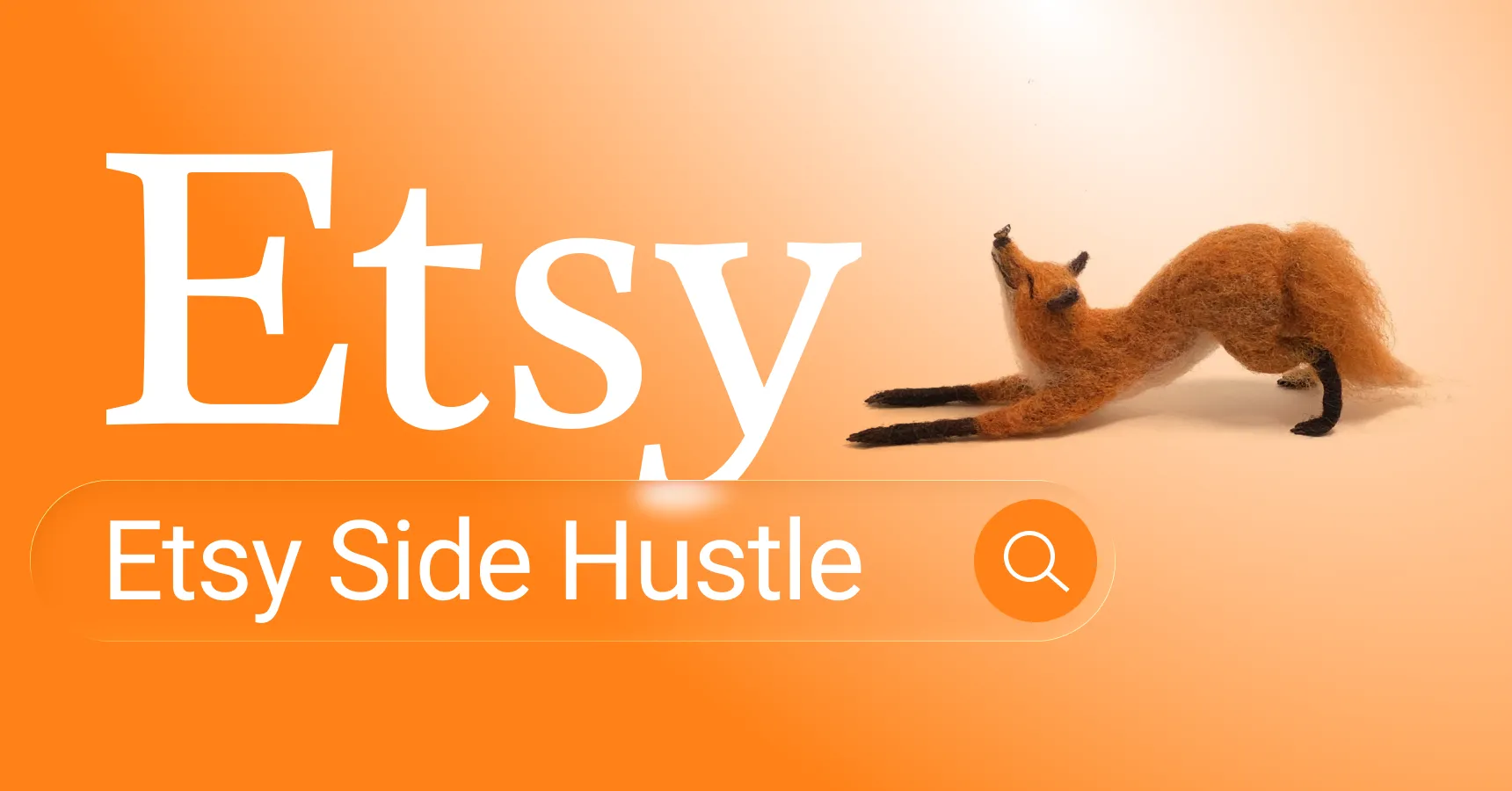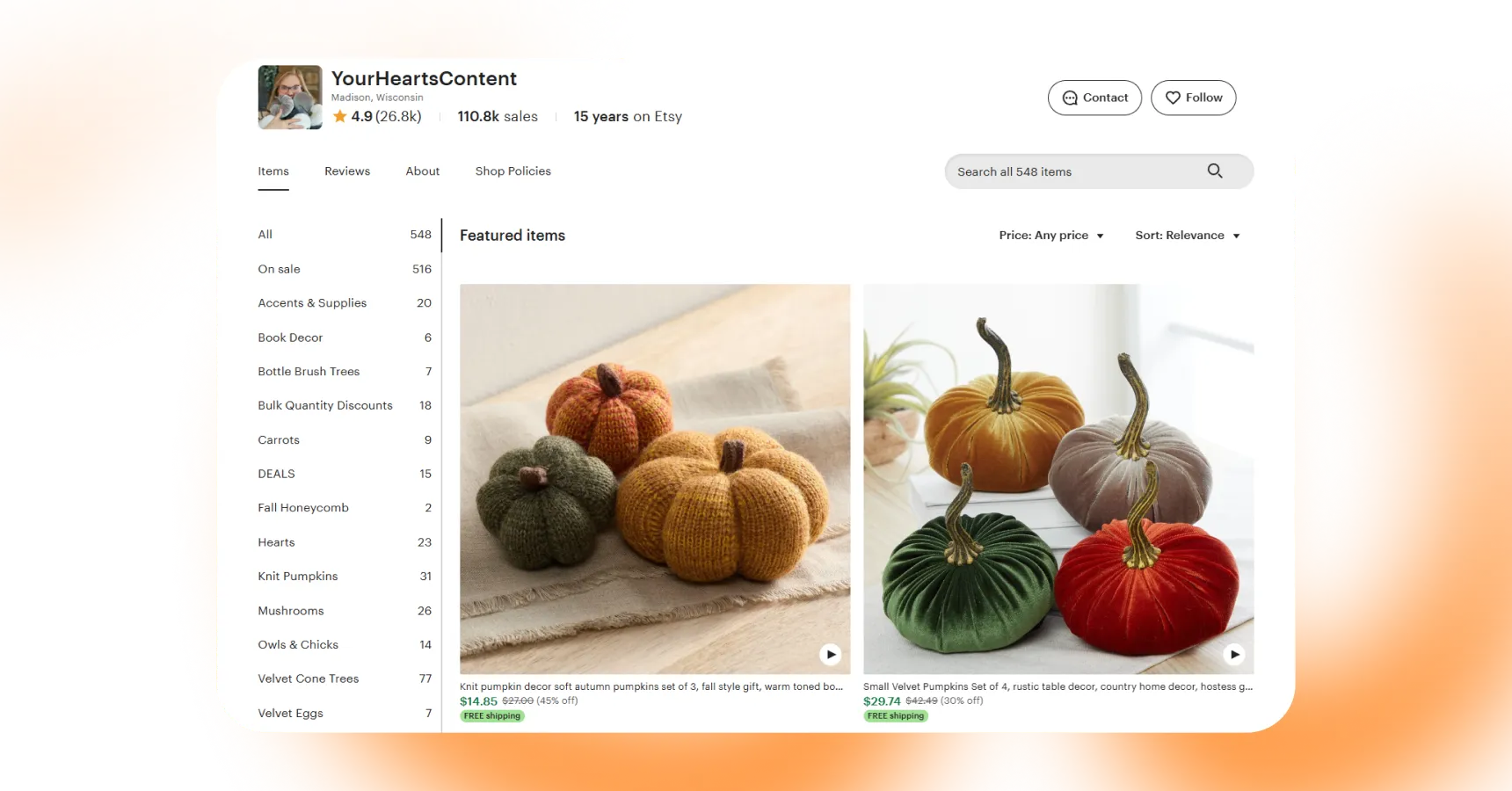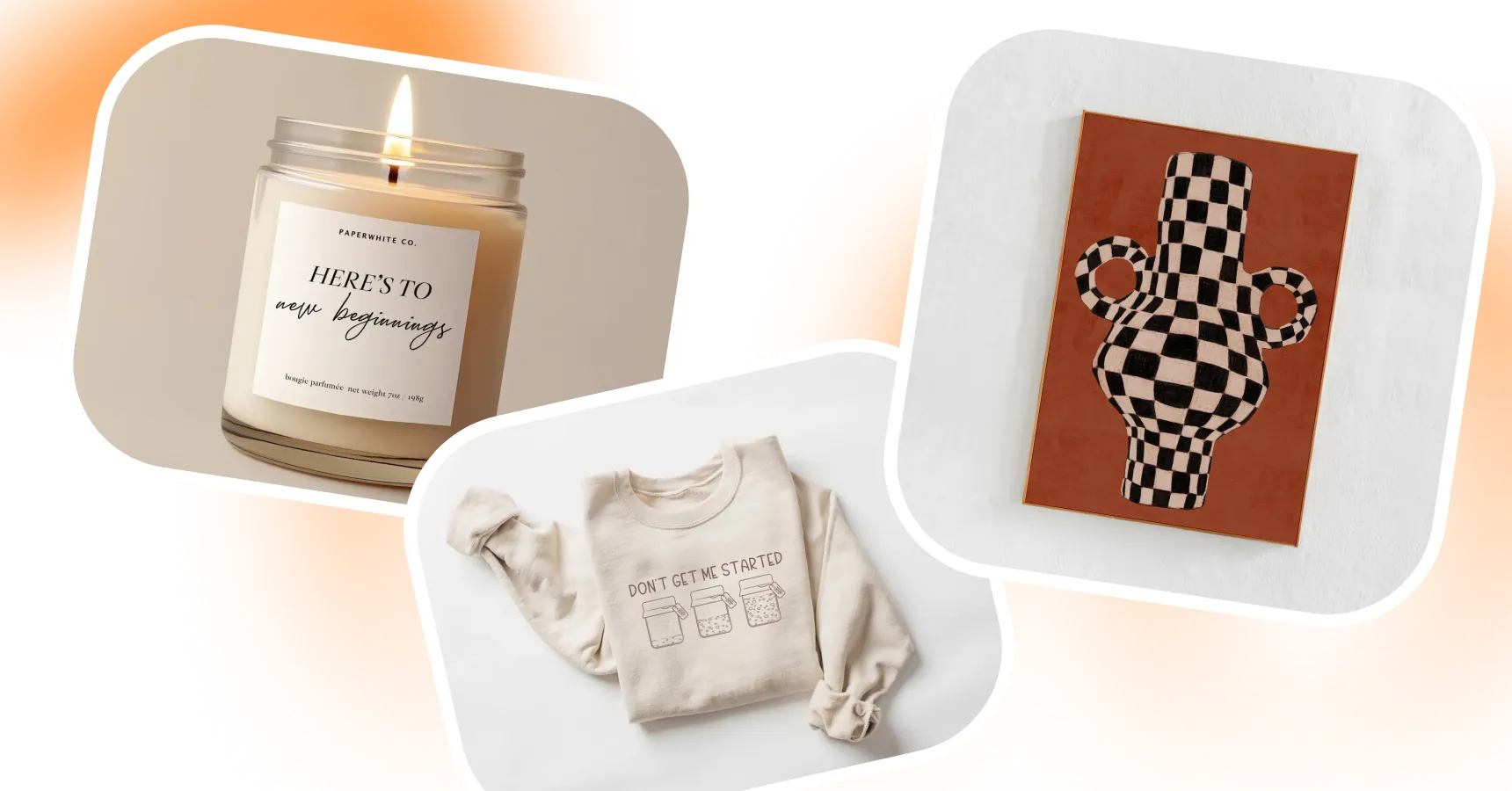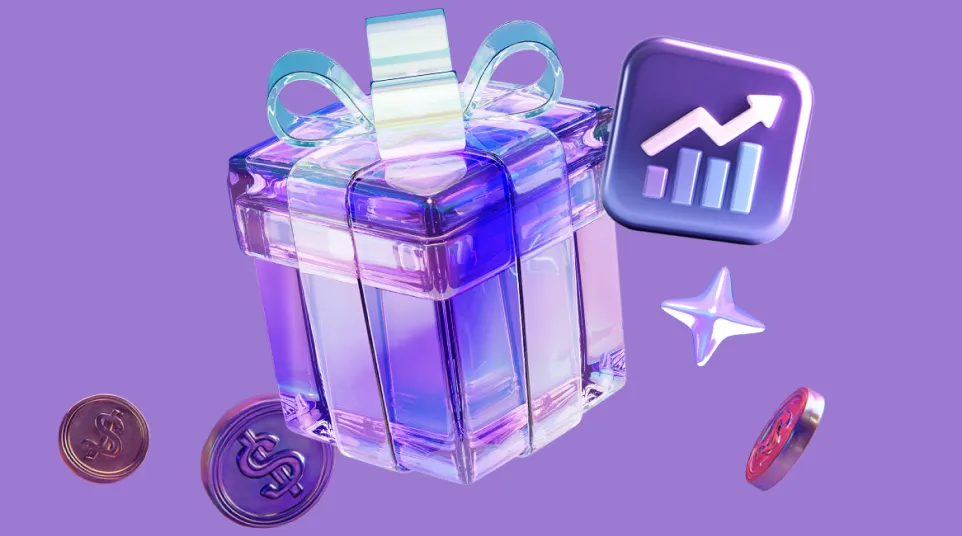Etsy Side Hustle: A Clear Guide To Starting And Growing Your Shop

You’re thinking about an Etsy side hustle. Maybe you want to pad your savings. Maybe you’re craving a creative outlet that also pays. We’ve all been there, staring at an idea and wondering, “Could this actually work?”
This guide is here to give you clarity. We’ll walk through what you can sell, how to set up a shop, and how to grow it at your own pace. No jargon. No hype. Just a clear roadmap you can follow, even if you’re short on time or cash.
a BANG?
Why Etsy works as a side hustle

Etsy is one of the easiest ways to test an idea online without building your own website. Millions of people shop there every month. They come looking for unique goods, handmade pieces, digital downloads, and vintage finds. This built-in audience is a gift to beginners.
You don’t need a big upfront investment. Setting up a shop is free, and listing fees are low. You can work around your schedule – lunch breaks, evenings, or weekends.
Myth vs. reality: Clearing the air
When people first think about selling on Etsy, a lot of doubts come up. Let’s tackle a few of the biggest ones.
Myth 1: “I need a full business plan or big budget before I start”.
Reality: Most sellers begin with a single product and a few dollars in listing fees. You can test the waters without risking your savings.
Myth 2: “Etsy is only for artists or super-crafty people”.
Reality: Etsy hosts everything from digital planners to craft supplies. You don’t have to be a maker. You can sell print-on-demand designs, curated vintage finds, or digital downloads.
Myth 3: “I won’t stand a chance because it’s too crowded”.
Reality: Competition exists, but shoppers are constantly looking for new, fresh items. With good photos, clear keywords, and a unique angle, even new shops can get seen.
Myth 4: “It takes too much time to run a shop”.
Reality: Many sellers manage their shops in small pockets of time. Automation tools, print-on-demand partners, and message templates reduce the workload so you can start small and scale later.
By uncovering the truth behind these myths, the path becomes clearer. Etsy isn’t a magic ATM, but it is a practical, low-risk way to learn ecommerce and build a side income.
What you can sell: Profitable ideas
Now that we’ve cleared up the myths, you’ve seen the truth: Etsy isn’t just for artists or people with a studio full of supplies. It’s a marketplace built for all kinds of sellers – from makers to curators to designers sitting at a laptop. That means your options are wider than you might have thought.
In this section, we’ll look at the most common and profitable product types on Etsy. You’ll see where beginners often start, how each option works, and what kind of time and cost you can expect.

Handmade goods
Jewelry, candles, crochet, custom gifts – anything you make with your hands. Handmade items can stand out if they solve a problem or express a style that shoppers can’t find elsewhere.
Digital downloads
Printables, planners, SVG files, invitations, social media templates. You design once, upload, and sell many times. This is a path to passive income because you don’t have to ship anything.
Print-on-demand
Mugs, shirts, tote bags, posters. You design the artwork, and a partner like Printify or Printful prints and ships it. You don’t buy stock upfront.
Vintage finds
If you love thrifting, you can curate collectibles, decor, or fashion from past decades. Buyers come to Etsy looking for unique vintage pieces.
Craft supplies
Patterns, beads, sewing kits. Other makers need supplies, and you can fill that gap.
a BANG?
Competition and How to stand out
Looking at the competition like this helps you make smarter choices. If you’re just starting, you might avoid the most crowded categories until you find your unique angle. Niches with moderate competition, like digital downloads or craft supplies, give you room to experiment and grow without feeling lost in the crowd.
The key is to pick a niche that fits your skills, interests, and the time you have, then find a small way to stand out. Even one thoughtful tweak – like targeting a specific audience or offering a bundle – can make your shop noticeable to buyers.
Step-by-step: Starting your Etsy side hustle
Let’s turn your idea into a shop, one clear step at a time.

1. Research your niche
Before you create anything, see what’s already selling. Open Etsy search, type your idea, and check the results. Look at:
- Bestseller badges
- Number of reviews
- Price points
Tools like eRank and Marmalead show search volume and competition. This isn’t guesswork; it’s like looking at a budget before you spend.
2. Create or source products
Decide if you’ll make items yourself or use a partner. Handmade goods require time but give you full control. Print-on-demand lets you upload designs and outsource printing and shipping. Digital downloads only require your design work once.
If you use digital assets from others, make sure you have the right licenses.
3. Set up your Etsy shop
Opening a shop is guided. You choose a shop name, upload a banner, add a profile photo, and fill in your story. This is your chance to build trust.
Set your payment and shipping settings carefully. Clear policies reduce questions and disputes.
4. Optimize your listings
Etsy is a search engine. To be found, you need good keywords in your title, description, and tags. Use the words your buyers would type.
Add high-quality photos or mockups. Bright, clear images get more clicks. Write descriptions that explain benefits, not just features.
Price with care. Don’t undercut yourself. Think about materials, time, and fees.
5. Manage orders and customer service
Respond to messages quickly. Use saved replies for common questions. Keep track of your inventory or templates. If you’re using print-on-demand, check that your partner fulfills orders smoothly.
Good service leads to positive reviews, which drive more sales.
Marketing beyond Etsy
Etsy’s internal traffic is great, but you can grow faster if you bring in your own visitors. Think of Etsy as the shop and marketing as the street signs pointing people there.
📱 Use social media
Pinterest, Instagram, and TikTok are perfect for Etsy sellers because they’re visual platforms where your products can really shine. Share photos of your items, but don’t stop there.
Post videos showing your creation process – people love seeing how something is made. You can also share the story behind your product or even your personal journey as a seller ❤️ Why you started, what inspires you, or how you design your items – these stories help buyers connect with you and your shop.
Use hashtags, pin your listings, and post consistently. Even a few thoughtful posts a week can drive real traffic to your Etsy store.
📧 Build a small email list
Even a handful of repeat buyers can give you steady income. Offer a freebie or discount in exchange for an email address. Send occasional updates or new product alerts.
💡 Try Etsy ads
Etsy Ads let you pay to show your listings higher in search. Start small. Track what works. Think of it as a low-risk test investment, not a permanent cost.
Balancing time and scaling up
Most sellers start in the cracks of their schedule – lunch breaks, evenings, weekends. That’s okay. Consistency beats intensity.
⚙️ Automate what you can. Use templates for messages. Let your print-on-demand partner handle shipping. Schedule social posts in batches.
As your profits grow, consider outsourcing tasks like photo editing or customer emails. This frees you to focus on design and strategy.
You don’t have to go full-time to make your shop meaningful. Small steps add up 🌱
a BANG?
Common mistakes and how to avoid them
Starting an Etsy shop comes with a learning curve, but avoiding a few common mistakes can save you time and frustration.
- Pricing too low is a frequent trap. Factor in materials, time, and fees – fair pricing shows value and leaves room to grow.
- Skipping keyword research limits visibility. Use terms shoppers search for naturally in your titles, tags, and descriptions.
- Poor photos make products look unappealing. Use natural light, a clean background, and multiple angles.
- Ignoring customer service can hurt reviews and repeat sales. Respond promptly, and consider templates for common questions.
- Not reinvesting profits slows growth. Use early earnings to improve photos, materials, or marketing.
By keeping these points in mind, you can avoid unnecessary setbacks and set your Etsy side hustle up for steady success ✅
How much you can really earn
It is natural to wonder about income. The truth: results vary a lot, but here are some realistic benchmarks so you have a sense of what is possible:
- Hobby sellers (few products, minimal marketing) often make $50–$300 a month.
- Part-time sellers (5–20 listings, regular promotion) see $500–$1,500 a month once established.
- Full-time shops with strong branding and many listings can reach $3,000–$5,000+ a month or more over time.
💲 Your earnings depend on your niche, product quality, pricing, and marketing. Digital downloads and print-on-demand can scale more easily because you are not limited by your hands. Handmade items can command higher prices but take more time.
Etsy itself has reported that the median annual sales for an active seller hovers around $2,500–$4,000, which lines up with the part-time numbers above. Some sellers do far better, but most build up gradually over months rather than overnight.
An Etsy shop is not a get-rich-quick plan. But with steady effort and smart product choices, it can become a real, meaningful income stream.
Tools and resources for Etsy sellers
💪 The right tools can take a lot of weight off your shoulders. They help you stay organized, work smarter, and make your shop look professional, even if you’re just starting out.
You don’t have to figure everything out alone. Here are tools that help:
- Etsy seller handbook – official tips and policies
- Canva – create product mockups or social graphics
- Marmalead/eRank – keyword research
- Printify/Printful – print-on-demand partners
The great thing is, many of these tools have free versions, so you can dive in without worrying about costs. Pick the ones that fit your style and needs, and suddenly you’ll have more time to focus on what matters most – creating products you love and connecting with your customers – instead of getting stuck on technical details.
Conclusion and next steps
An Etsy side hustle isn’t magic money. It’s a small, steady investment of time and creativity that can grow into something real. You do not need to quit your job or spend a fortune – just one idea and the courage to take the first step can get you started.
Pick one product idea. Open a shop. List your first item. That’s all it takes to start.
Etsy alternatives
If you like the idea of earning online but want a different path than Etsy, dropshipping could be a fit. The concept is simple: you sell products online, the supplier ships them to your customers, and you keep the profit. No inventory, no messy storage, and no shipping headaches. You get more time to focus on growing your business instead of juggling logistics.
That’s where AliDropship comes in. We’ve built an all-in-one dropshipping platform that makes selling online simple, even if you’ve never run a store before.
a BANG?
Here’s why it works:
- A professional store, ready for you: Your turnkey store comes packed with high-demand products, beautiful images, engaging videos, customer reviews – everything to build trust and convert sales.
- Beginner-friendly setup: No coding, no headaches. Just click, customize, and start selling.
- Automated promotion: Marketing tools are built in, so you don’t need a background in advertising to drive traffic.
- High-quality products and brands: Access top-tier suppliers and premium fashion labels like Tommy Hilfiger, Calvin Klein, Gucci, Louis Vuitton, and more.
- Expert support every step of the way: Our dropshipping pros are here for training, consultations, and questions. Plus, get access to dedicated managers, customer support, and our Marketing Academy.
We’ve gathered everything in one place so you can skip the endless app hunt and compatibility headaches. Focus on growing your business – AliDropship handles the heavy lifting.
In short, if you’re ready to expand your side income beyond Etsy – or try a new online business model – AliDropship gives you the tools and support to start confidently and grow at your pace.
Want to start selling online without the stress?🚀 AliDropship gives you a fully built store with automation and support – ready to go from day one!
How to use Etsy as a side hustle?
What is the best passive income on Etsy?
How much money can I realistically make on Etsy?
What sells best on Etsy?
How much does Etsy take from a $100 sale?









